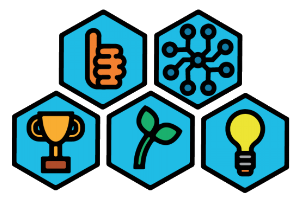by Ralph van Roosmalen
Management 3.0 and Agile, how do they fit together? Does Management 3.0 need Agile? Does Agile need Management 3.0? Does Agile Software Development need Management 3.0?
Good questions, especially because we developed a new module called Agile Product Development.

Let’s first talk about Agile. Agile is a mindset. For example, doing Scrum doesn’t mean your company is being Agile, as there’s a difference between Doing and Being and this is a big thing in the Agile community. Many organizations are doing Agile practices, but when you really look at them in detail you will see that they are not being Agile. They are just doing some of the practices, like standing up in the morning and keeping a list of work that needs to be done, but they are not really Agile. So they’re right to differentiate between being and doing.
What is being Agile? You will probably get a different answer from everyone. It all started with the Agile Manifesto in 2001. The Agile Manifesto is focused on software development. However, the Agile Manifesto could be applied in many other environments. Any organization where there is a complex system.
The Agile Manifesto states:
Individuals and interactions over processes and tools
Working software over comprehensive documentation
Customer collaboration over contract negotiation
Responding to change over following a plan
It’s important is to realize, that the Agile manifesto, for example, doesn’t say Documentation is not important but we value working software more. During the 18 years since the Manifesto was created, there have been, many variances. An interesting one is Modern Agile. Modern Agile has four guiding principles:
- Make People Awesome
- Make Safety a Prerequisite
- Experiment & Learn Rapidly
- Deliver Value Continuously
Looking at all this, we could conclude that Agile is all about being transparent, inspect and adapt. Care about people, and deliver value to the customers. If you keep this in mind in everything you do, from the CEO to the teams, from shareholders until the finance department, you’d be able to call your organization Agile.

Management 3.0 is based on five principles:
- Engage People and their Interactions
- Improve the System
- Delight all clients
- Manage the system, not the people
- Co-create work
These principles don’t conflict with the Agile mindset. The principles show that Management 3.0 cares about people and about improving, delivering value to all clients and creating an environment where people can show their best selves and this is something we do all together.
We have a module called Agile Product Development explaining why Agile is relevant for some organizations today. Learn more about the new module here.
Can you be Agile, and not think about Management 3.0? Sure, however, if you manage in a Management 1.0 style it could be challenging to really be Agile.
Can you apply Management 3.0, and not being Agile? Sure, however, by applying Management 3.0 you will slowly move to an Agile mindset.
Can you do both? Absolutely! Many Agile frameworks don’t say anything about the role of Management. By using Management 3.0 and understanding how it views Management, you clearly help the organization in implementing management.
So back to the opening questions: Management 3.0 and Agile, how do they fit together? Does Management 3.0 need Agile? Does Agile need Management 3.0? Does Agile Software Development need Management 3.0?
It doesn’t need to go hand in hand, but if you talk about Management in an Agile Organization you talk about Management 3.0. It is a golden combination and will help your organization become successful and really Agile, from top to bottom.

